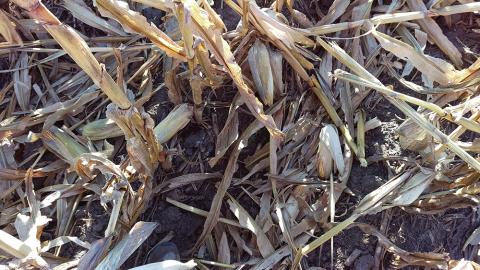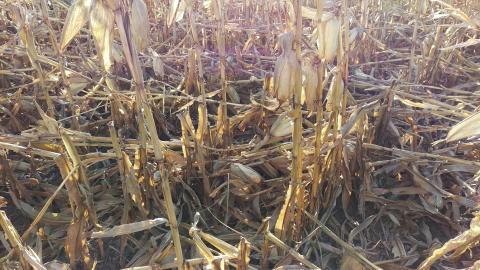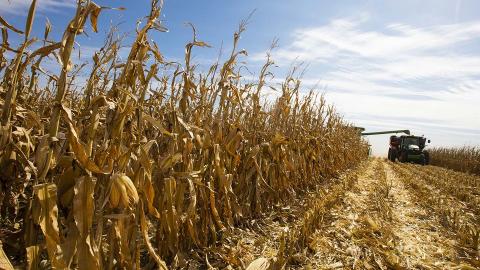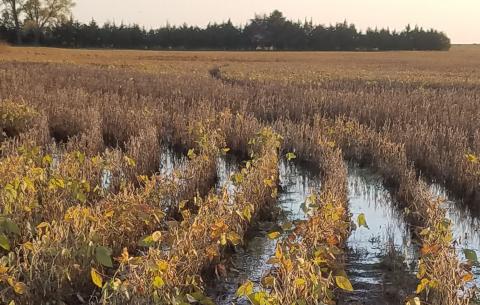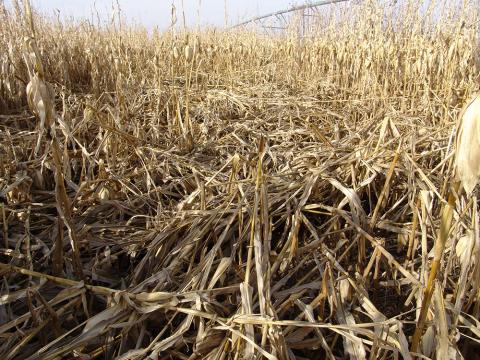Potential Reasons for Weakened Ear Shanks and Ear Loss
November 3, 2017
While sustained high winds for several days in late October was likely the final catalyst, a number of factors may have led up to increased ear drop in corn. This article looks at potential factors throughout the season that may have eventually led to a challenging harvest.
Combine Adjustments for Downed Corn
October 27, 2017
As if rain delays weren’t frustrating enough this harvest, a broad swath of southern Nebraska experienced high winds Thursday and Friday, downing corn and leaving 20-60 bu/ac grain on the ground in some areas. Implementing some of these recommended combine adjustments may be just the ticket for getting more grain in the wagon.
USDA-NASS: Just 17% of Corn and 33% of Beans Harvested
October 16, 2017
As of Monday corn harvest was 17% done, well behind the five-year average of 39%, and soybean harvest was at 33%, well behind the average of 67%. Harvest progress in many other corn and soybean production states also lagged.
Long-term Grain Storage Requires Good Management
October 13, 2017
Grain stocks in Nebraska, as well as the US, continue to increase. Maintaining these stocks to protect grain quality and value requires good storage practices to start with and continual monitoring to avoid damage from insects and disease. This guide addresses what to watch for and specific steps you can take to protect your stored grain.
End of Season Flooding Effects on Soybeans, Harvest
October 13, 2017
October has had a wet start in most of the state, with some areas receiving several inches of rain. Considering potential impact on yield and ability to harvest these fields will be critical in the next few weeks.
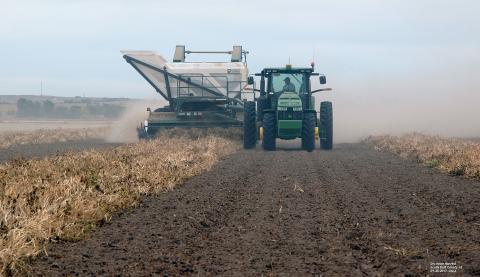
Precipitation Slows and Complicates Dry Bean Harvest
October 6, 2017
Dry bean harvest in the Panhandle is going slow this season. In most years, dry bean harvest is completed by the end of September; however, this year precipitation events over the last several weeks have slowed harvest and have now brought it to a standstill.
Recommendations for Harvesting Alfalfa in October
October 3, 2017
Alfalfa's growing season is usually over by mid-October, but this year many fields received late season rain that's contributing to a substantial, high quality alfalfa crop. Here are some recommendations for a successful harvest when drying times are apt to be slow.
Stalk Rot Diseases in Nebraska Corn Fields
September 22, 2017
Stalk rots can be found in corn across Nebraska. This story addresses the risk factors and how to scout for stalk rots, assess stalk strength, and determine extent of damage in a field. Fields with high levels of stalk rot should be given priority at harvest to reduce yield losses due to lodging.
